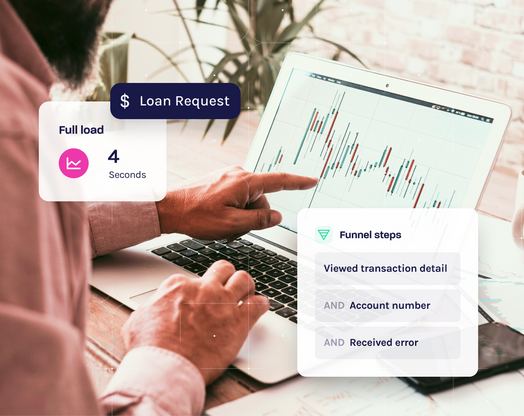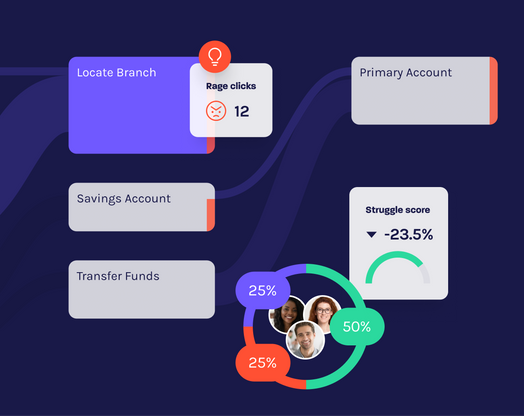
5 ways to boost e-commerce revenue with digital analytics
“We are surrounded by data but starved for insights.” -Jay Baer, marketing and customer experience expert
What is digital analytics?
Digital analytics is the process of collecting and analyzing digital data from different sources, such as websites and mobile apps, to better understand how users are interacting and behaving with your organization. Organizations can use this data to improve the digital customer experience.
Digital analytics and e-commerce
With the explosion of digital analytics, it can be challenging for businesses to know where to focus for the most impact on the bottom-line. In e-commerce, customer experience (CX) and conversion data are typically front and center. And with over 2 billion people engaging in e-commerce shopping, understanding which of those analytics are most relevant can make the difference between a buy and a bye. In this blog, we explore five ways to boost e-commerce revenue using digital analytics.
1. Know your big picture: omnichannel data
Each e-commerce company has its own unique mix of digital channels and purchase funnels–from D2C to BOPIS to social shopping. Consumers notoriously zig-zag their own unique path to a sale, but omnichannel customers are more high value, with a 90% higher customer retention than those shopping on a single channel. Looking at data through an omnichannel lens ensures a holistic view of your buyer, and key insights that can increase conversions. Leveraging omnichannel data analytics can help:
- Market relevant promotions to customers on their preferred channel(s).
- Retarget customers across various platforms to bring them back to your platform.
- Re-engage consumers with abandoned carts on different channels.
2. Personalize the buying experience
Eighty percent of consumers are more likely to buy from a brand that delivers a personalized shopping experience. With the amount of data available from past purchases, searches and other analytics, it’s become much easier to create a frictionless and faster customized shopping funnel. Even better, personalized shopping builds trust and shows you’re using their data in a useful way. This data can be used to:
- Display what similar shoppers purchased or complementary products during check out and other key buying moments.
- Send personalized promotions emails, texts and other communications based on prior interests and searches.
- Keep the shopping experience going by displaying recently-viewed items.
3. Max out untapped mobile potential
Three in four consumers say they buy products on their mobile devices because it saves time. But the big caveat is 90% believe the mobile shopping experience can be improved. Unfortunately, e-commerce apps aren’t always optimized for mobile and contain glitches–from crashes to clickability. This is where companies can take action on the data goldmine to fix common problems and can increase revenue, including:
- Optimize performance for operating systems, devices and versions.
- Analyze and fix crash issues and technical glitches to create a smoother customer experience.
- Monitor app screens, forms and CTA button analytics to proactively improve conversions.
4. Prioritize testing and experimentation
One area that can fall below the radar is A/B testing and experimentation, but those results can have a big impact on revenue growth. Testing multiple ideas can confirm hypotheses that drive buying decisions, iterate conversion tactics and resolve customer pain points. Using testing and experimentation can help to:
- Decide on options for email offers, product positioning, website revisions or other test ideas.
- Turn effective experiments into mobile app capabilities, new payment options or future feature innovations.
5. Combine customer sentiment with digital analytics
It’s not just the quantitative digital analytics that matters, but qualitative data information that can deliver important insights to help grow conversions. Engaging in regular feedback through voice of customer (VoC) surveys and other methods can provide a more extensive picture of what you know–and what you don’t know about your customer’s experience. Cross-referencing qualitative data with existing digital analytics can provide valuable insights to roll up in conversion efforts. Here are some proven ways to leverage data:
- Create automated survey pop ups at key points in the buying process to gauge and fix struggle areas and unnecessary steps.
- Monitor social media to understand customer sentiment about your brand, products and website that can be addressed.
- Launch post-purchase surveys to learn about customers’ shopping experience and make improvements to the process.
Grow your e-commerce revenue with digital analytics
Companies are constantly under pressure to provide the best customer experience and gain loyalty, or risk losing business to their competitors. When digital analytics are taken to their full potential, e-commerce companies can grow conversions, and ultimately revenue. Learn how to take your digital analytics further with Glassbox today.







